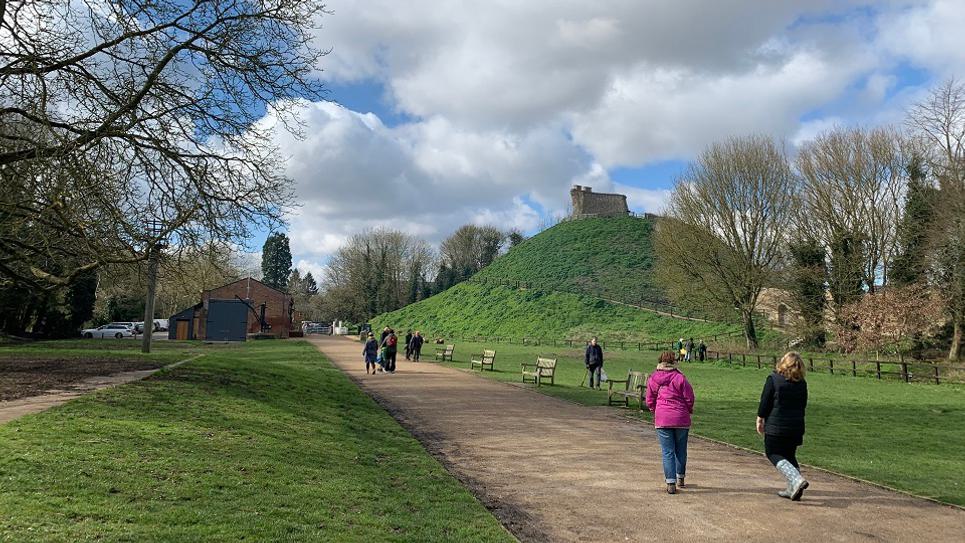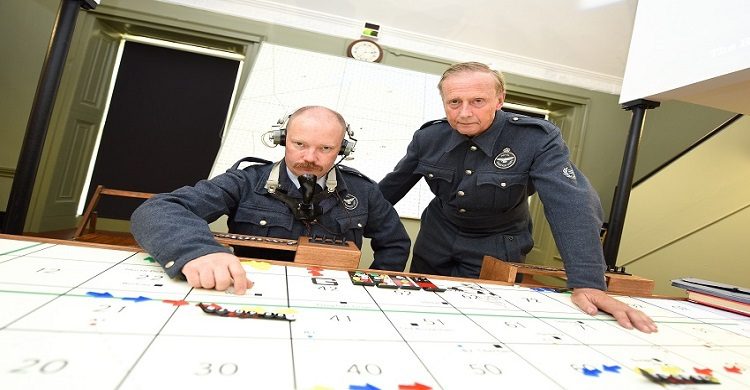
Back to Blogs
Discover
20 Things You May Not Know About Clare Castle Country Park
Nestled in the beautiful town of Clare are the remains of a 13th Century stone castle keep set upon a motte overlooking Suffolk's smallest town.
An 11th Century Castle

Nestled in the beautiful town of Clare, Clare Castle Country Park contains the remains of the 13th Century stone castle keep set upon its 60ft high motte overlooking the town.
The Park has a variety of walks and trails that will tell you about what you see and hear as you meander through the paths and the town itself has 130 listed buildings.
Clare Castle was first built in the 11th century by Richard FitzGilbert, a Norman knight who was rewarded by William the Conqueror with large estates in Suffolk, Essex and Kent. He is estimated to have been the sixth wealthiest non-royal layman in England at the time of Domesday Book in 1086.
Richard had built a castle at Tonbridge before the one in Clare, but Richard and his descendants made Clare their administrative seat, eventually taking the family name from the town.
Did You Know?

1. The wealthiest fourteenth-century English widow, Elizabeth de Clare (granddaughter of Edward I and founder of Clare College Cambridge) owned and lived in Clare Castle for much of the period 1320-1360.
2. Ancestors of King Richard the Third are buried in Clare Priory immediately adjacent to the castle.
3. It is thought the 18th Century owner of Clare Castle, John Elwes, a notorious miser, was probably the model for Charles Dickens' Scrooge.
4. A medieval carving from a window in Clare Castle now serves as the sign above The Swan pub on Clare High Street and thought to be the oldest pub sign in England.
5. Clare Castle has the highest motte in Suffolk! The motte at about 60 feet high.

6. Clare railway station is the only station built on the site of a medieval castle?
7. Lady’s Walk is called so because it is suspected to be the path that Elizabeth De Burgh would take from the Castle Keep to her ornamental garden which contained a number of flowers and small animals.
8. The first park warden lived in a wooden shed and kept goats in the Park, which he transported in his estate car.
9. The first car park was made using granite chippings from the redundant railway lines.
10. When the ponds were first created the fire brigade pumped in 10,000 gallons of water…and it all disappeared overnight into the drainage system that the railway board had installed in Victorian times.

11. Otters have recently been spotted along the New Cut of Clare Castle Country Park and the park is also the home of a number of community bee hives.
12. Clare has an exceptional population of slow worms along the disused railway line. Common lizard and grass snake can also be found.
13. Clare Castle Country Park has benefited from a £2 million National Lottery Heritage Fund grant in the last two years and can now offer visitors a wider range of attractions
14. Clare Castle Country Park is run by a Trust with volunteers playing a major part in its upkeep
15. Fish returned to the moat of Clare Castle Country Park without any re-introduction by humans? It is suspected that a fish may have been dropped by a passing bird and by chance have survived in the moat.

16. The majority of landscape maintenance and management is carried out by volunteers of Clare Castle Country Park Trust… they are a brilliant bunch!
17. There is a willow wigwam and storytelling circle part-way around the Nature Trail of the Park – perfect for an afternoon picnic and a tale or two!
18. The wooden carvings of a woodpecker, otter and sheep in the park were all hand carved using a chainsaw.
19. During an archaeological dig at the park in 2019 a half penny dating back to William I (William the Conqueror) was found in a spoils heap!
20. Clare Castle Country Park's much-loved play train is modelled on the GER Class T18 Steam Locomotive.
For more information on visiting the town of Clare visit https://www.visit-clare.co.uk/
Related Posts





Related Blogs

News
Bury Tour Guides to launch…
Bury St Edmunds Tour Guides to Introduce new tours in…

News
Town’s Museum Forms New…
Moyse’s Hall Museum will be forging links with a…

News
St Edmundsbury Cathedral…
St Edmundsbury Cathedral in Bury St Edmunds is…

News
Bury St Edmunds & Beyond…
Step inside many of Bury St Edmunds historic buildings…

News
Bury's Best Pubs with a Past
some notable, historic and somewhat quirky pubs and…
Latest news

News
How to Spend Betwixtmas in Bury St Edmunds & Beyond
The post Christmas period is the perfect time to get out and about before the new year kicks in, and you’ll find plenty of activities and places to visit in Bury St Edmunds and beyond.

News
Parents Guide to Pre Christmas Entertainment
It's the school holidays and with Christmas just around the corner we've put toegther a guide on places to take the kids to keep them entertained until Santa visits!

News
Enjoy a Festive Afternoon Tea in 2025
Celebrate the Christmas season with a festive afternoon tea in Bury St Edmunds & Beyond...

News
Festive Winter Walks
Get outside and enjoy the fresh crisp winter air with one of these walks in Bury St Edmunds and Beyond!

News
Bury Tour Guides to launch new tours next year after successful 2025
Bury St Edmunds Tour Guides to Introduce new tours in 2026 and continue the successful Food and Drink Tours!

News
New in Bury St Edmunds For 2026
A sneak peak into new attractions visitors can enjoy in Bury St Edmunds in 2026.

News
Baby It's Cold Outside... Things To Do When the Weather Turns Frosty
Just because the temperature’s dropped doesn’t mean the fun has to! If you’re visiting town during the chillier months, there’s still plenty to see, do, and experience.

News
Places to sit by a roaring fire in Bury St Edmunds & Beyond
Warm up by a roaring fire this winter in Bury St Edmunds & Beyond...

News
Festive Theatre Guide 2025
There’s no better way to summon the magic of the festive season than a trip to the theatre.
